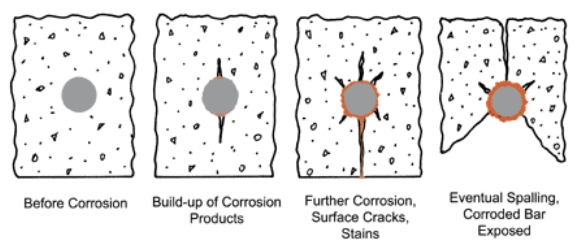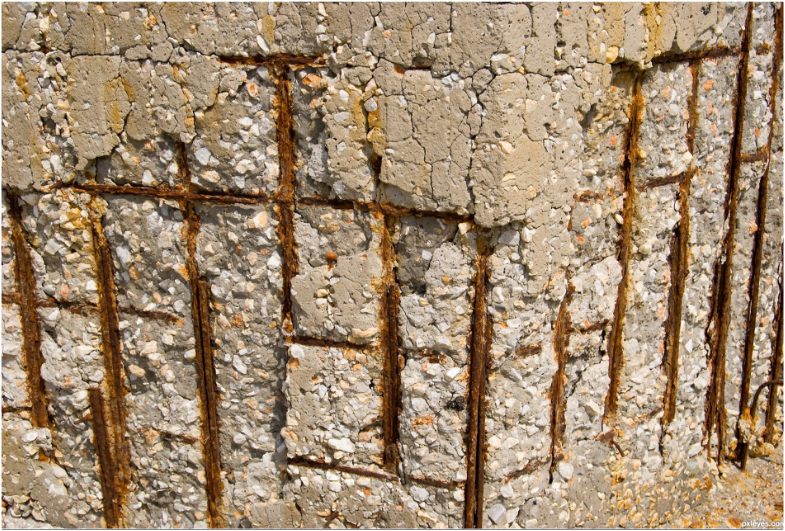Corrosion of steel in concrete may cause structural damage and early failure of Reinforced Concrete structures. Besides the volume increase and cover spalling due to corrosion (Figure 1), it negatively influences, the flexural, shear, and bond strength of the corroded element.

Vidal and his colleagues studied the long-term corrosion process of reinforced concrete beams stored in a chloride environment for 17 years under service loading in order to be representative of real structural conditions. Results showed that the flexural stiffness under service load is mostly affected by the corrosion of the tension reinforcement as a result of steel cross-section reduction and the steel/concrete bond loss.
Xia’s group of research examined experimentally the shear performance of reinforced concrete beams with different corrosion levels in both longitudinal reinforcing steel bars and stirrups. Both the stiffness and shear capacity of the beam decrease as the corrosion level increases. However, the decrease of the stiffness is insignificant when the applied load is relatively low. It is only when the applied load exceeds 20-30% of its ultimate load, the stiffness loss caused due to corrosion becomes significant. As the corrosion level becomes severer, shear failure mode of the beams may change from concrete crushing to stirrup failure. This is attributed to the cross-section loss of stirrup bars, which becomes severer as the corrosion level increases.
Studying the effect of corrosion on the bond between steel and concrete, Fang carried out pullout tests for a series of specimens with varying reinforcement corrosion levels between 0% and 9% with and without stirrups that provide confinement. Test results for specimens with deformed bars showed that, for deformed bars without confinement, bond strength was very sensitive to corrosion levels and generally decreased with the corrosion level. Bond strength at 9% corrosion was only one-third of that of non-corroded specimens, but for deformed bars with confinement, corrosion had no substantial influence on the bond strength.
References:
Vidal, Castel, and Francois, (2007), Corrosion process and structural performance of a 17 year old reinforced concrete beam stored in chloride environment
Xia, Jin, and Li, (2011), Shear performance of reinforced concrete beams with corroded stirrups in chloride environment
Fang, Lundgren, Chen and Zhu, (2004), Corrosion influence on bond in reinforced concrete
